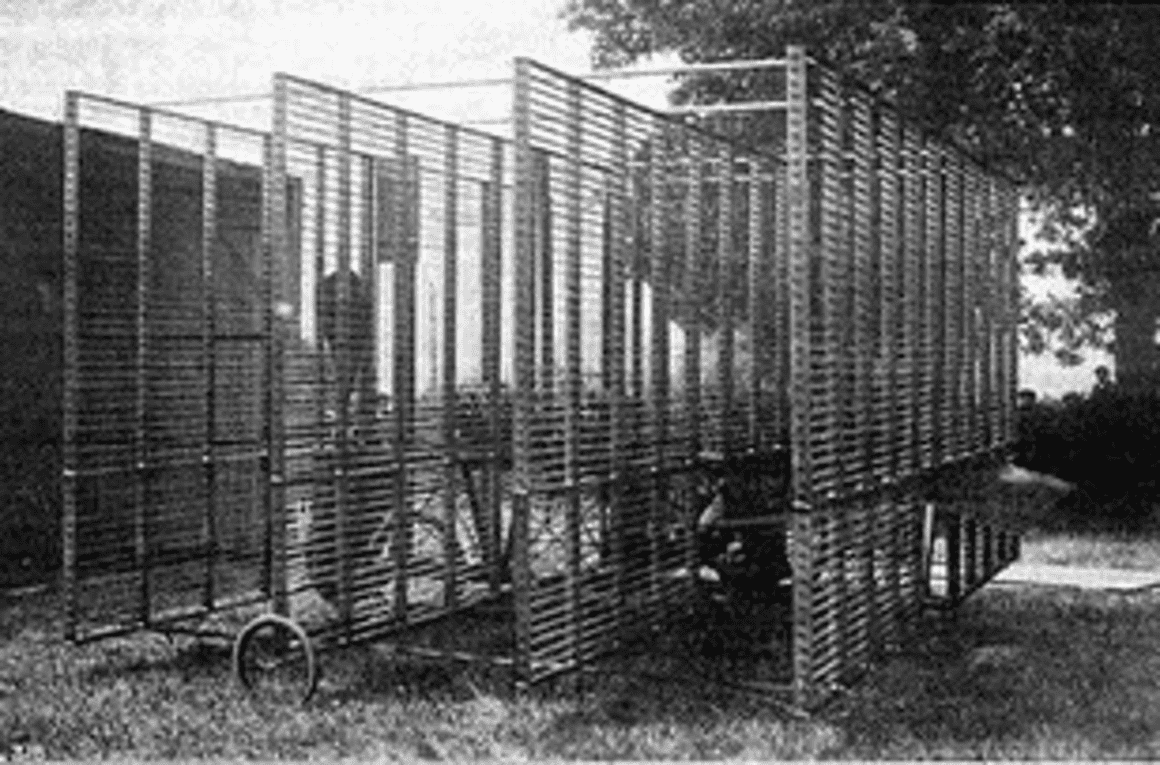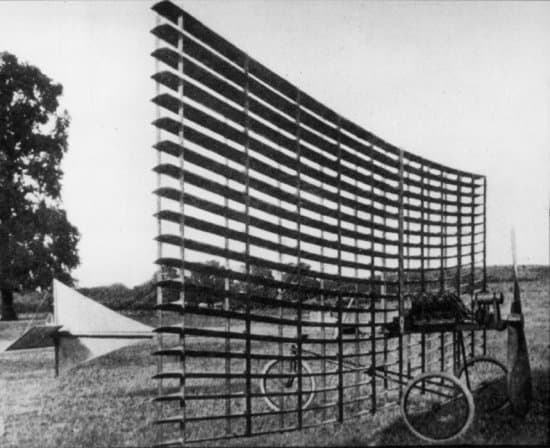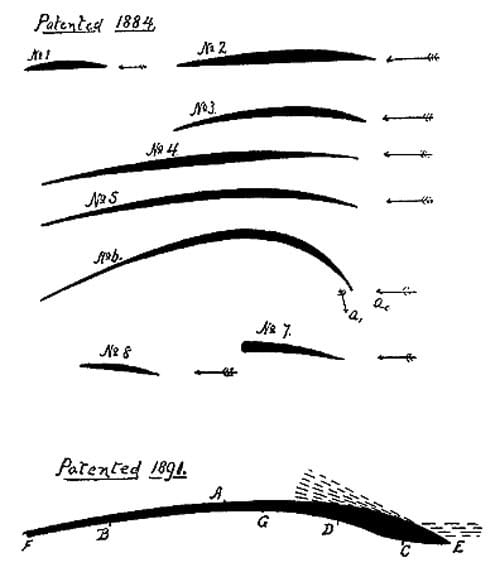In 1907, British aerospace inventor Horatio Frederick Phillips designed and tested a plane with 200 individual wings. Coming four years after the Wright Brothers’ historic first flight, Phillips’ plane made what was probably the first manned, powered flight in the United Kingdom. Horatio Phillips also studied aeronautics and earned several patents for cambered, or curved, wing surfaces.

Phillips’ 1907 Multiplane had 200 Wings
It would be difficult to imagine a more striking, unique aircraft than Phillips’ 1907 design called the “multiplane.” The wings, resembling venetian blinds, had four sets of 50 airfoils. They were connected in a cage structure.
The aircraft was made of wood and had a 22-horsepower engine that could move it to a take-off speed of about 30 miles per hour. It also had an eight-foot diameter propeller and weighed about 500 pounds without a pilot.
Multiplane Makes First Manned Flight in United Kingdom
Phillips’ first flight with the multiplane took place on 6 April 1907, and he flew about 500 feet. Some disputed that it was a true manned flight, as the pilot had no way of controlling it. One unique feature of the multiplane was that its wings were cambered, or curved, something that he had already become well known for.

In 1904, Phillips had designed and tested another plane with a venetian blind design. This one had a relatively few 20 wings. He also built its 22-horsepower water-cooled 4-cylinder engine himself. This plane had a tail section in the shape of a cross and a three-wheel undercarriage.
The 1904 model was 13 feet 9 inches long, 10 feet high, and 600 pounds. Philipps designed the plane with steel tubing, spruce and ash wood, and a fabric covering. During a test flight, it completed a short hop of about 50 feet.
Coal-Fired Engine Powers Horatio Phillips’ 1904 Aircraft
Horatio Phillips’ first attempt with a multi-wing plane came in 1893. He designed it with 50 wings in a similar venetian blind arrangement as the other models. The blinds, or wings, were about 20 feet long and set about two inches apart. The propeller was turned by a coal-fired engine, producing about nine miles per hour.

Phillips tested this aircraft on a circular track, which was 100 feet in diameter and made of wooden planks four feet wide. The aircraft had no pilot, so Phillips attached it to a central post with wires. Once it reached 40 miles per hour, it lifted to just two or three feet.
These aircraft were not Phillips’ only experience with aeronautics. Before designing the aircraft, he studied airfoils and how they could produce lift.
Cayley Studies Airfoil Concepts in the 1850s
In the 1850s, English engineer George Cayley was the first to study the concept of heavier-than-air flight. During his research, he discovered that curved surfaces produced more lift than flat ones. He also saw the effectiveness of streamlining and balance for an aircraft.
In 1852, he designed, built, and tested the world’s first fixed-wing glider that could carry a person. This earned Cayley the title of “Father of Aerodynamics.”
Phillips Advances Cayley’s Designs
In the 1890s, Horatio Phillips examined Cayley’s designs for lifting surfaces and advanced them. Philips produced new concepts for cambered airfoils, basing them on the shapes of bird wings.

He even built his own wind tunnel to test his ideas. It had a steam injector that pulled air into its entrance, creating an air flow that he used to test his concepts.
Phillips Receives Patent For His Ideas
Phillips’ airfoils were curved more on the top than on the bottom, which gave them the name “double-surface airfoils.” In 1894, he received a patent for eight of his designs. Phillips later used his airfoils on his venetian blind-style planes, and aircraft designers worldwide began using Phillips’ ideas on more modern aircraft.
